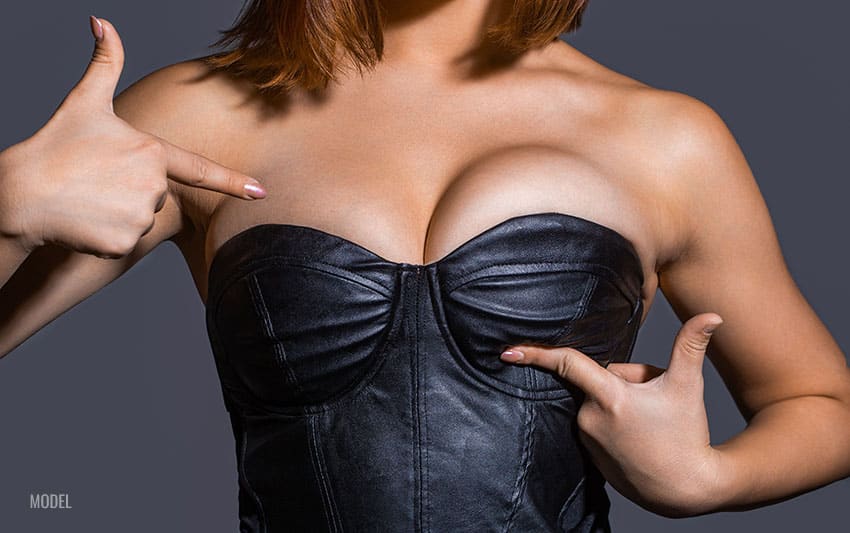When to Consider a Breast Augmentation Revision
4 Min Read:
Breasts are for many women an asset to their femininity and a body feature they often like to highlight and enhance. Breast enhancement involves the placement of breast implants to enhance size, shape, or symmetry and continues to top the list of plastic surgery procedures performed in the world. While breast implants are designed to be durable and long-lasting, there are factors that can influence their lifespan, and complications may arise over time.

In this guide, we’ll explore the longevity of breast implants, common complications that may warrant a breast augmentation revision, and the considerations women who have them should be aware of.
Understanding the Longevity of Breast Implants
Breast implants typically come with a ten-year warranty. However, many women enjoy them for far longer. While modern implants are engineered for durability, they are not permanent. Saline implants typically last around 10-15 years, while silicone implants may have a longer lifespan. Natural factors that can undermine implant longevity are as follows:
- Individual Factors:
- The longevity of breast implants varies among individuals. Factors such as lifestyle, genetics, and overall health can influence how implants age over time.
- Changes Over Time:
- You may notice changes in breast shape, size, or symmetry as breasts naturally change due to aging, gravity, and hormonal fluctuations. These changes can impact the appearance and feel of breast implants. Breast sagging (ptosis) often causes a deflated appearance and the nipples to drop from their natural position.
- Combining a breast lift (mastopexy) with implant replacement can restore a more youthful breast position.
Common Complications Causing a Need for Breast Revision
Complications can also shorten the lifespan of your breast implants. The most common complications are listed below:
-
Implant Rupture:
- Implant rupture is a tear or hole in the implant shell, leading to saline or silicone filling leakage.
- Look for changes in breast shape, size, firmness, and discomfort. Leaks in saline implants are usually easy to detect as they cause deflation, but those with silicone implants often need MRI imaging to check for or confirm ruptures.
- Ruptured implants typically require replacement to restore symmetry and maintain the desired aesthetic outcome.
-
Capsular Contracture:
- This condition is caused by the formation of a thickened, hardened capsule of scar tissue around the implant that squeezes the breast, causing distortion.
- Check for increased firmness, visible distortion, and discomfort.
- Surgical intervention often involves removing or modifying the capsule and replacing the implant.
-
Implant Malposition:
- Shifting or displacement of the implant from its original position will manifest as an unnatural appearance, asymmetry, or discomfort.
- Repositioning the implant and potentially reinforcing the breast pocket may be necessary.
-
Implant Rippling or Wrinkling:
- Visible or palpable wrinkles or ripples under the skin are often more noticeable with saline implants and insufficient natural breast tissue.
- Correction of breast implant rippling may involve changing implant type, adjusting placement to under the chest muscles, or using fat grafting for additional soft tissue coverage.
3 Important Tips for Women Considering Breast Augmentation
Following these three tips is essential to ensure the best breast enhancement results and maintain the health of your augmented breasts:
- Choose a board-certified plastic surgeon:
- Selecting a board-certified and experienced plastic surgeon for the initial augmentation and any subsequent revisions is crucial for optimal outcomes
- Choose the implant type that is right for you:
- Silicone implants are known for a more natural feel and may be preferred for their longevity. However, saline implants have the advantage of providing visible signs of rupture.
- Attend regular check-ups and imaging appointments:
- Routine check-ups and imaging studies, as recommended by your surgeon, can help monitor the condition of breast implants.
- The FDA recommends an MRI screening for silicone implants three years after the initial breast augmentation and then every two years.
- For saline implant patients, implants only need to be checked by the surgeon every five to ten years.
Open communication with your surgeon is essential. Discuss any concerns, changes, or discomfort you may be experiencing promptly.
Breast augmentation revision is not always an emergency. Depending on the complication, you may choose an appropriate time for the procedure that aligns with your schedule.
Breast Augmentation and Revision in High Point, NC
Dr. Virgil Willard is a well-respected, board-certified plastic surgeon performing breast augmentation and revision procedures in High Point, North Carolina. His expertise and compassion make him an excellent choice for your initial cosmetic surgery and a revision if you need one. Contact Piedmont Plastic Surgery to schedule a consultation today by calling (336) 886-1667.
